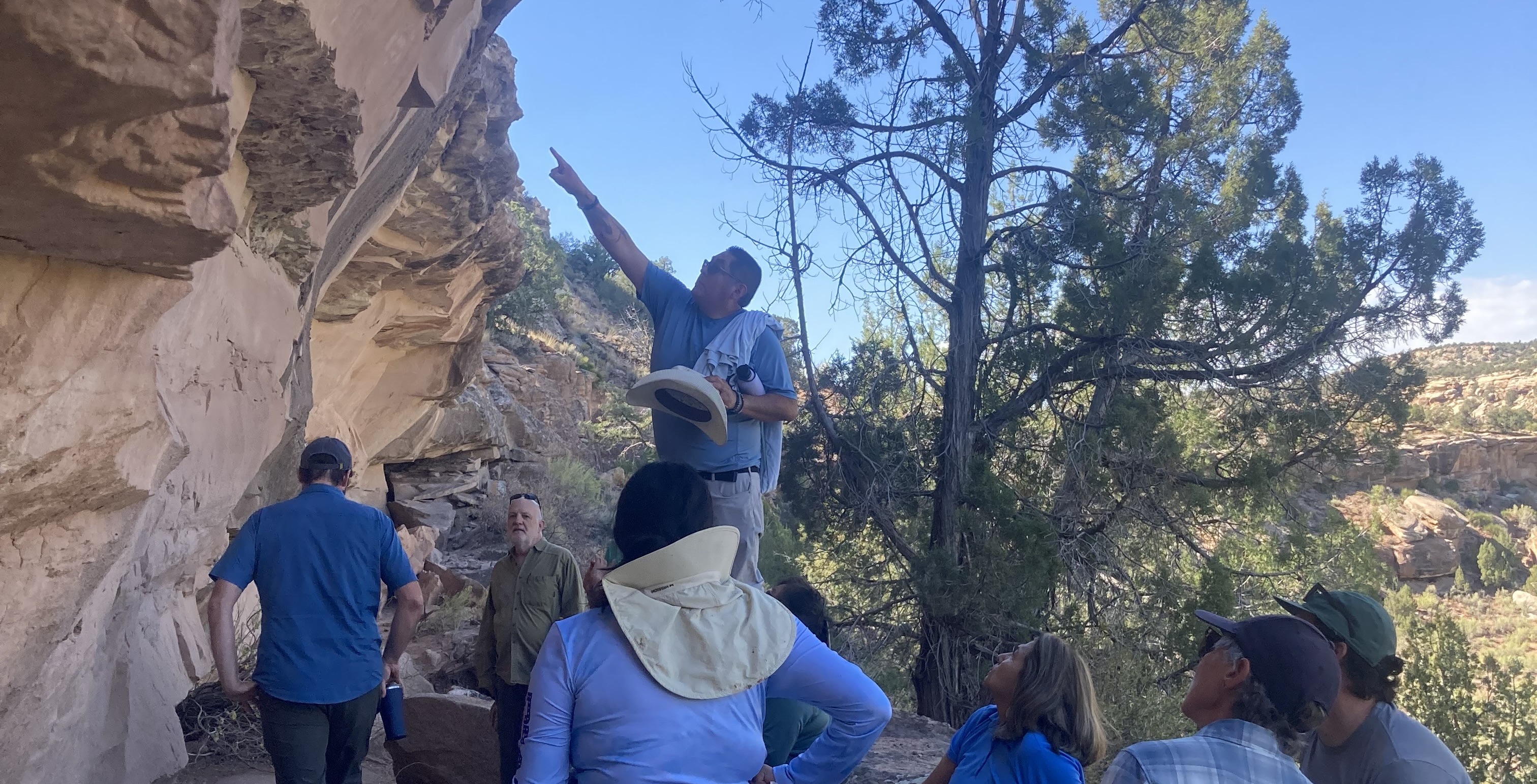Bears Ears Partnership: Stewarding Land and Heritage
Within the Bears Ears National Monument, a 1.36-million acre region in Utah, land, culture, and history are inseparable. The canyons, mesas, and rivers of this region have been home to Diné, Ute, Hopi, and Zuni peoples, and later sheltered settlers who came to the region for ranching and homesteading. Everyone agrees that this landscape is special, but debates over land use have deepened divides between Tribal Nations, federal agencies, environmentalists, and Utah residents. Pluralism asks us to face those tensions together and find ways to honor what each of us values.
That is the work of the Bears Ears Partnership (BEP), a nonprofit located in Bluff, Utah, that helps bridge Indigenous knowledge, Western science, and community stewardship. With support from New Pluralists, BEP has helped lead a movement to care for and sustain the Bears Ears landscape while strengthening relationships among those who call it home.
Partnership in Practice
In 2024, BEP helped to found the Bears Ears Conservation Partnership (BECP), a historic coalition of Tribal Nations, federal and state agencies, and conservation organizations. The BECP focuses on the restoration of the watersheds and canyons that connect with the surrounding Manti-La Sal National Forest—lands that share ecosystems, water sources, and sacred cultural sites. The work includes restoring streambeds, replanting native vegetation, and removing invasive species to improve long-term watershed health. Charissa Miijessepe-Wilson, Co-Director of the Bears Ears Inter-Tribal Coalition, reflects that “The BECP is not just another committee; it’s a dynamic, community-driven initiative dedicated to fostering meaningful, on-the-ground restoration and long-term stewardship through deep collaboration and shared commitment.”
At the same time, BEP continues its decades-long Lands Between Campaign, uniting Tribal leaders, archaeologists, and conservationists to protect 325,000 acres of ancestral land connecting the lands beyond Bears Ears, including Chaco Canyon and Mesa Verde. Recent efforts have led to joint habitat restoration projects and new agreements that ensure Tribal voices are centered in land management decisions; helping to build trust between Indigenous and non-Indigenous communities that historically stood on opposite sides of conservation debates.
In a BEP blog post regarding the annual Tribal gathering, Diné leader Davina Smith reflected, “Western conservation often views land through a utilitarian lens, but Indigenous wisdom reminds us that the land is inseparable from our identity. Protecting it is not about ownership—it’s about stewardship rooted in reciprocity and respect.”

Passing Knowledge Forward
Pluralism in Bears Ears expands beyond collaboration across institutions; it’s about connection across generations. Through the Canyon Country Youth Corps, both Indigenous and non-Indigenous youth work side-by-side with Tribal elders, archaeologists, and land stewards to repair trails, restore habitat, and document cultural sites. Through these intergenerational exchanges, BEP ensures that conservation is not only about preserving land; it’s about sustaining identity, confidence, and continuity across generations.
BEP employs youth from local communities, Tribes, Pueblos, and people of the greater Bears Ears region to restore trails, protect habitats, and maintain cultural sites. Working alongside elders and archaeologists, young people learn traditional ecological knowledge, language, and cultural practices, and see themselves as part of something larger.
A Living Model of Pluralism
The Bears Ears Partnership shows what it looks like when dialogue and stewardship go hand in hand. By bringing together Native and non-Native communities of the greater Bears Ears region to protect shared lands, they are modeling a form of pluralism rooted in reciprocity—one that honors difference, heals division, and restores belonging to both people and place.
“We continue to try to expand the idea that this isn't just a space for mainly people in San Juan, Utah, but this is a place that people can connect to because these are public lands."
- Carleton Bowekaty (Zuni Pueblo), Co-Director, Bears Ears Partnership